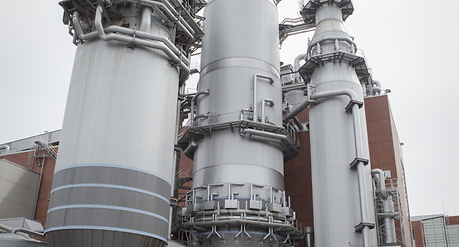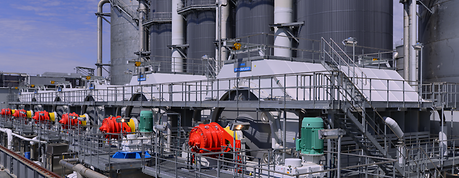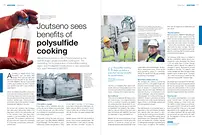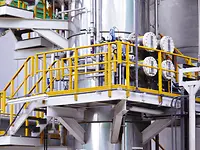Optimization, data analysis, augmented reality
ANDRITZ Polysulfide cooking
Improved chemical pulp yield, reduced dry solids loading
Polysulfide cooking has been around for many years, with the original goal of stabilizing and preserving the carbohydrates (hemicelluloses) in wood to improve yield. A new focus on overcoming bottlenecks in the recovery cycle without major capital investments, as well as increasing fiber yield of pulping, is causing mills to take a new look at the process and equipment. The increase in yield and overall pulp production, and the reduced solids in the black liquor which reduces the load on the recovery boiler, makes the investment in polysulfide economically beneficial.
Increased wood yield is one of the main targets in pulp production. While there are many ways to increase yield, the cost of doing so, in terms of capital investments or in the cost of adding yield-improving chemicals, has often exceeded the benefits.
Polysulfide cooking – improved yield without expensive chemical additives
The in-mill production and use of polysulfide cooking liquor improves pulp qualities, creating enhancements in fiber bonding that papermakers appreciate and also reducing the energy required to refine the paper stock. For the pulp producer, polysulfide cooking increases the fiber yield, especially for softwoods, but also in hardwood pulping.
The polysulfide cooking liquor is added in the impregnation stage at the very beginning of the cooking process. The liquor oxidizes the end groups of the hemicelluloses and slows down the alkaline peeling reactions, resulting in higher hemicellulose yield.
The characteristically orange-colored polysulfide liquor (called orange liquor) is made by modifying the white liquor – oxidizing the sodium sulfide in the liquor to a polysulfide with the help of an active coal catalyst and air. This white liquor oxidation process (MOXY process) is carried out in a small system which ANDRITZ has installed in several mills around the world. Since no chemicals are added to the white liquor to convert it, the sodium/sulfur balance in the mill remains the same as without a MOXY plant.

The world’s largest polysulfide plant at Metsä Fibre Joutseno mill in Finland.
Key advantages for papermakers
For the papermaker, pulp produced with polysulfide liquor has increased tensile strength as well as stiffer pulp fibers, which increase the internal bond strength (Scott bond). Papermakers have also reduced refining energy consumption due to the improved beatability of the pulp.
Key advantages in chemical recovery
Polysulfide cooking also reduces solids in the black liquor, which reduces the load on the recovery boiler. This sometimes is enough to eliminate a bottleneck in a mill that is recovery-limited without a major capital investment.




